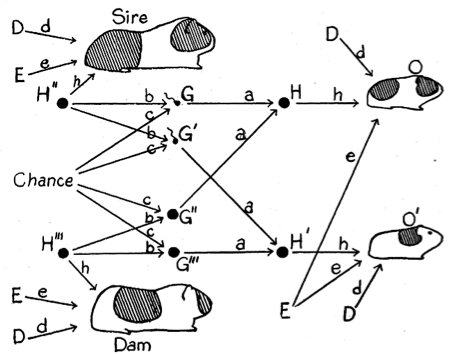The OpenMx project was originally funded through the Interdisciplinary Program of the National Institutes of Health Roadmap initiative. It is now funded through research grant DA-018673 from NIDA. We currently have 14 core team members and 25 core beta testers located in 5 countries and 23 academic institutions. The web page is hosted and maintained by the Social Science Research Institute and Quantitative Developmental Systems group at Penn State. Pre-built package binaries are hosted by the Human Dynamics Lab in the Department of Psychology at the University of Virginia. The project is licensed under the Apache License, Version 2.0.
Some History
In the late 1980s, Steve Boker and Jack McArdle wrote some software for the analysis of path models called Rampath. In 1990, Michael Neale began writing the SEM package Mx. In the early 90s, Michael Neale and Steve Boker merged the Rampath algorithm into Mx and a strange monster was born: the MX GUI. People could point and click their way through building a path model in a front end and numerical estimates for the model would be produced by a back end. This architecture worked well enough that the basic premise has survived to this day and is used by OpenMx which has a front end in the R statistical software and a backend optimizer written in C. In some ways, Mx is barely recognizable in OpenMx since the interface is completely different and the software has been rewritten top to bottom using modern programming techniques and languages. But deep within OpenMx still beats the ancient heart of Mx: a general purpose matrix optimization package. As time goes by, we expect you will be surprised at all of the things that OpenMx can do.
The Team
Core Development Team
- Steven Boker (University of Virginia) - PI, co-author of Mx and lead software architect
- Michael Neale (Virginia Commonwealth University) - Co-PI, Author of Mx and modeling guru
- Hermine Maes (Virginia Commonwealth University) - Co-PI, , co-author of Mx, and Documentation team leader
- Joshua N. Pritikin (Virginia Commonwealth University) - item factor analysis, multilevel, Newton-Raphson optimizer, SLSQP, likelihood-based confidence intervals, buildbot ringmaster, CRAN punch bag, technical debt crusader
- Timo von Oertzen (University of the Federal Forces, Munich)
- Tim Brick (Pennsylvania State University) - Optimization lead developer
- Ryne Estabrook (University of Illinois Chicago) - Lead alpha tester and documentation team
- Michael Hunter (Pennsylvania State University) - State Space Modeling lead developer, weighted least squares team, LISREL specification lead developer
- Mahsa Zahery (Department of Computer Science, Virginia Commonwealth University) - CSOLNP lead developer
- Timothy Bates (University of Edinburgh) - Consultant
- Rob Kirkpatrick (Virginia Commonwealth University) - Keeper of the website front page, constant presence on the forums, maintainer of GREML feature,
mxTryHard(), andmxStandardizeRAMpaths(), aficionado of analytic derivatives and custom fitfunctions
Core Beta Testers
- Pascal Deboeck (University of Utah)
- Emilio Ferrer (University of California, Davis)
- Christopher Hertzog (Georgia Institute of Technology)
- Kevin Grimm (Arizona State University)
- Ken Kelley (University of Notre Dame), author of the R library MBESS
- Matthew Keller (University of Colorado)
- Michael Kubovy (University of Virginia)
- Jean-Philippe Laurenceau (University of Delaware)
- Todd Little (Texas Tech University)
- Diane Lickenbrock (Western Kentucky University)
- Gitta Lubke (University of Notre Dame)
- John J. McArdle (University of Southern California)
- Sam McQuillin (University of South Carolina)
- Sarah Medland (Queensland Institute of Medical Research)
- John Nesselroade (University of Virginia)
- Joseph Rausch (Nationwide Children's Hospital)
- William Revelle (Northwestern University)
- Michael Scharkow (Johannes Gutenberg University Mainz), author of sem-blog.org
- James Steiger (Vanderbilt University) , author of SEPath
- Melissa Sturge-Apple (University of Rochester)
- Stephen Tueller (RTI International)
- Jens Vogelgesang (Universität Hohenheim), author of sem-blog.org
- Theodore Walls (University of Rhode Island)
- Keith Widaman (University of California, Riverside)
- Timothy York (Virginia Commonwealth University)
Software We Use
- R is the powerful, open source statistical system.
- Matrix - is an object-oriented matrix library for R
- snow - is an R library for distributing tasks among cpu cores.
- snowfall - usability wrapper around snow for parallel R programs.
- NPSOL - is a general purpose optimizer.
- drupal - is the software that is running this web site and the OpenSEM forums.
- Git on github - the version control software we use.
- Sphinx: Documentation build system for the OpenMx user guide.
What's the deal with the Guinea Pig?
The first published path diagram was in Sewell Wright's 1920 article, "The relative importance of heredity and environment in determining the piebald pattern of guinea–pigs." Proceedings of the National Academy of Sciences, 6, 320–332. Believe it or not, Wright used drawings of guinea pigs rather than circles or squares to represent his variables. Here is a reproduction of the original diagram.

Our logo came from the Open ClipArt Library.